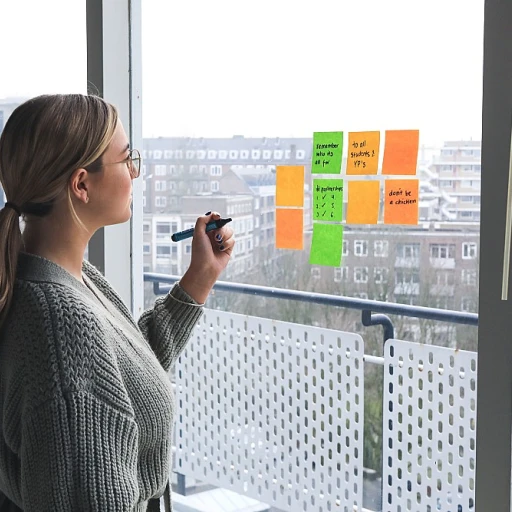
Understanding the procurement maturity model in a New Zealand context
What is a Procurement Maturity Model?
For New Zealand organizations, understanding procurement maturity is essential for achieving procurement excellence and aligning with business goals. A procurement maturity model is a structured framework that helps organizations assess the current stage of their procurement function. It identifies how advanced procurement practices are, from basic transactional sourcing to strategic procurement and category management. This model supports organizations in evaluating their procurement strategy, management processes, and supplier relationships.
Why Procurement Maturity Matters in New Zealand
Procurement teams in New Zealand face unique challenges, such as managing cost savings, ensuring supply chain resilience, and adapting to digital transformation. The maturity model provides a roadmap for organizations to move from reactive purchasing to proactive, strategic sourcing procurement. By focusing on procurement maturity, companies can:
- Enhance risk management and compliance
- Drive cost reduction and value creation
- Improve supplier collaboration for long-term success
- Enable data-driven decision making
- Strengthen category management and sourcing strategies
Stages of Procurement Maturity
Procurement maturity is typically divided into several stages, each reflecting the sophistication of procurement practices within an organization. These stages range from basic, ad hoc processes to fully integrated, strategic procurement functions. As organizations progress, they shift their focus from simple cost control to broader business objectives, such as sustainability, innovation, and supplier partnerships.
| Stage | Characteristics |
|---|---|
| Initial | Unstructured, reactive sourcing, limited data use |
| Developing | Some process standardization, basic cost focus |
| Defined | Formalized procurement processes, category management emerging |
| Advanced | Strategic sourcing, supplier management, data-driven insights |
| Leading | Integrated digital procurement, proactive risk management, business alignment |
Procurement Maturity in the New Zealand Market
New Zealand companies are increasingly recognizing the value of advancing their procurement maturity. With growing pressure to deliver cost savings and manage supply chain risks, organizations are investing in digital tools and strategic sourcing. Insights from local retail partnership tracking highlight the importance of data and supplier collaboration in achieving procurement excellence. By benchmarking against best practices, procurement organizations can identify gaps and opportunities for improvement, setting the stage for more strategic procurement functions.
Key challenges for office managers in New Zealand procurement
Common Procurement Hurdles for Office Managers
Procurement in New Zealand organizations is evolving, but office managers still face unique challenges as they work to align procurement practices with business goals. Understanding procurement maturity is essential, as it helps identify where your organization stands and what obstacles might be slowing progress.- Fragmented Processes: Many procurement teams operate with manual or siloed systems, making it difficult to track data, manage spend, or implement strategic sourcing. This can hinder cost savings and limit visibility across procurement categories.
- Lack of Strategic Focus: Procurement functions often focus on transactional tasks rather than strategic procurement. Without a clear procurement strategy, organizations may miss out on long-term value and risk management opportunities.
- Supplier Relationship Management: Building strong supplier relationships is crucial for procurement excellence. However, limited resources or unclear category management can make it challenging to develop partnerships that support business growth and supply chain resilience.
- Data and Insights Gaps: Reliable data is the foundation of effective procurement. Office managers may struggle to access or analyze procurement data, making it harder to benchmark maturity, identify best practices, or drive continuous improvement.
- Digital Transformation: The shift to digital procurement tools is ongoing, but adoption can be slow. Without the right technology, organizations may lag in sourcing procurement, risk management, and achieving procurement maturity.
Why These Challenges Matter
These hurdles can impact the entire procurement function, from daily operations to long-term strategy. Addressing them is key to advancing your maturity model and unlocking benefits like cost savings, improved supplier performance, and better alignment with business objectives. For a deeper understanding of how integrated business solutions can help overcome these challenges in New Zealand companies, explore this insightful blog on integrated business solutions.Assessing your current procurement processes
Pinpointing Your Procurement Maturity Stage
Assessing your current procurement processes is a crucial step for New Zealand organizations aiming to achieve procurement excellence. Understanding where your procurement function stands on the maturity model helps you identify gaps and opportunities for strategic improvement.Key Areas to Evaluate
To get a clear picture of your procurement maturity, focus on these core aspects:- Process Standardization: Are your sourcing and procurement practices consistent across the business, or do they vary by department or category?
- Data and Insights: How well does your organization capture, analyze, and use procurement data to drive decisions and cost savings?
- Category Management: Is there a structured approach to managing procurement categories, or is it mostly reactive?
- Supplier Management: Do you have a strategic supplier relationship management process, or is it mainly transactional?
- Risk Management: How does your procurement team identify and mitigate supply chain risks?
- Technology Adoption: Are digital tools and platforms integrated into your procurement function to support efficiency and transparency?
Practical Steps for Office Managers
Office managers play a vital role in driving procurement maturity. Start by mapping out your current procurement processes and documenting each stage. Engage with procurement teams to gather insights on pain points and best practices. Use internal data to benchmark your organization against industry standards and identify areas for improvement. For a deeper dive into optimizing remote procurement processes and digital collaboration, check out this resource on remote work guidelines and procedures.Assessment Checklist
| Assessment Area | Current State | Improvement Focus |
|---|---|---|
| Process Consistency | Ad-hoc / Standardized | Document and align processes |
| Data Utilization | Limited / Advanced | Leverage analytics for strategic sourcing |
| Supplier Relationships | Transactional / Strategic | Develop long-term partnerships |
| Technology Integration | Manual / Digital | Adopt procurement technology |
| Risk Management | Reactive / Proactive | Implement risk assessment tools |
Steps to advance your procurement maturity
Practical actions to elevate procurement maturity
Advancing your procurement maturity in a New Zealand business context means moving from tactical, reactive processes to a more strategic, data-driven approach. This journey is not about a single leap, but a series of practical steps that build on each other. Here’s how organizations can progress through the maturity model and align procurement with broader business goals.- Define your procurement strategy: Start by clarifying your organization’s procurement function and how it supports your overall business strategy. This includes setting clear objectives for cost savings, risk management, and supplier performance.
- Focus on category management: Move beyond transactional sourcing to category management. This approach helps procurement teams group similar goods and services, enabling better negotiation, strategic sourcing, and long-term supplier relationships.
- Standardize and document processes: Establish consistent procurement practices across the organization. Documenting workflows and policies ensures everyone understands the process, reduces errors, and supports compliance.
- Leverage data and insights: Use data to assess current performance and identify opportunities for improvement. Regularly review spend analytics, supplier performance, and sourcing outcomes to inform decision-making.
- Invest in digital tools: Implement digital solutions that streamline sourcing procurement, automate routine tasks, and provide real-time visibility into the supply chain. This supports procurement excellence and enables more strategic procurement decisions.
- Develop procurement skills: Provide training for procurement teams to build expertise in strategic sourcing, negotiation, and category management. Encourage knowledge sharing through blogs, workshops, and industry events.
- Align procurement with business stakeholders: Foster collaboration between procurement and other departments. This ensures the procurement function is aligned with business needs and supports long-term organizational success.
Tracking progress and adjusting your approach
Regularly assess your procurement maturity using benchmarks relevant to New Zealand organizations. Track key metrics such as cost savings, supplier risk, and process efficiency. Use these insights to refine your procurement strategy and adapt to changing market conditions. By focusing on continuous improvement and best practices, your organization can achieve procurement excellence and drive sustainable value.Leveraging technology for smarter procurement
Unlocking the Value of Digital Tools in Procurement
For New Zealand organizations aiming to reach higher stages of procurement maturity, digital transformation is no longer optional. Embracing technology can help procurement teams streamline processes, improve data accuracy, and drive strategic sourcing decisions that align with business goals.
- Centralized Data Management: Digital procurement platforms allow for better category management and supplier insights. With all procurement data in one place, organizations can track spend, monitor supplier performance, and identify cost savings opportunities more effectively.
- Automated Workflows: Automation reduces manual errors and frees up staff to focus on strategic procurement activities. This shift supports procurement excellence and helps teams move beyond transactional tasks.
- Advanced Analytics: Leveraging analytics tools provides real-time insights into sourcing, risk management, and procurement category performance. These insights support more informed decision-making and help align procurement strategy with overall business objectives.
- Supplier Collaboration: Digital platforms make it easier to communicate and collaborate with suppliers, supporting long-term relationships and more resilient supply chains.
Best Practices for Implementing Procurement Technology
When integrating new digital solutions, focus on these best practices to maximize the benefits for your procurement function:
- Start with a clear understanding of your current procurement maturity and identify gaps where technology can add value.
- Engage stakeholders across the organization to ensure alignment with business strategy and category management goals.
- Prioritize user-friendly solutions that support both strategic and operational procurement practices.
- Invest in training for procurement teams to build digital capabilities and foster a culture of continuous improvement.
By leveraging technology, New Zealand companies can transform their procurement organizations, achieve greater cost savings, and build a more agile, strategic sourcing process that supports long-term success.
Building supplier relationships for long-term success
Strengthening Supplier Partnerships for Sustainable Value
Building strong supplier relationships is a cornerstone of procurement excellence for New Zealand organizations. As procurement teams progress through the maturity model, the focus shifts from transactional sourcing to strategic partnerships that drive long-term business goals and cost savings. A mature procurement function recognizes that effective supplier management is not just about negotiating the lowest price. Instead, it involves a holistic approach that aligns supplier capabilities with your organization’s strategic sourcing and category management objectives. This alignment supports risk management, innovation, and continuous improvement across the supply chain.- Data-driven insights: Leverage procurement data to evaluate supplier performance, identify opportunities for collaboration, and anticipate potential risks. Regularly reviewing supplier metrics helps organizations make informed decisions and adapt their procurement strategy as market conditions evolve.
- Transparent communication: Open and honest dialogue with suppliers fosters trust and encourages innovation. Sharing business goals and category priorities enables suppliers to tailor their offerings and contribute to your organization’s success.
- Joint value creation: Move beyond traditional cost-focused negotiations. Explore opportunities for joint process improvements, digital integration, and shared sustainability initiatives. This approach strengthens the supply chain and delivers benefits for both parties.
- Continuous improvement: Regularly review and refine supplier management practices. Encourage feedback from suppliers and internal stakeholders to ensure your procurement practices remain aligned with best practices and evolving business needs.











